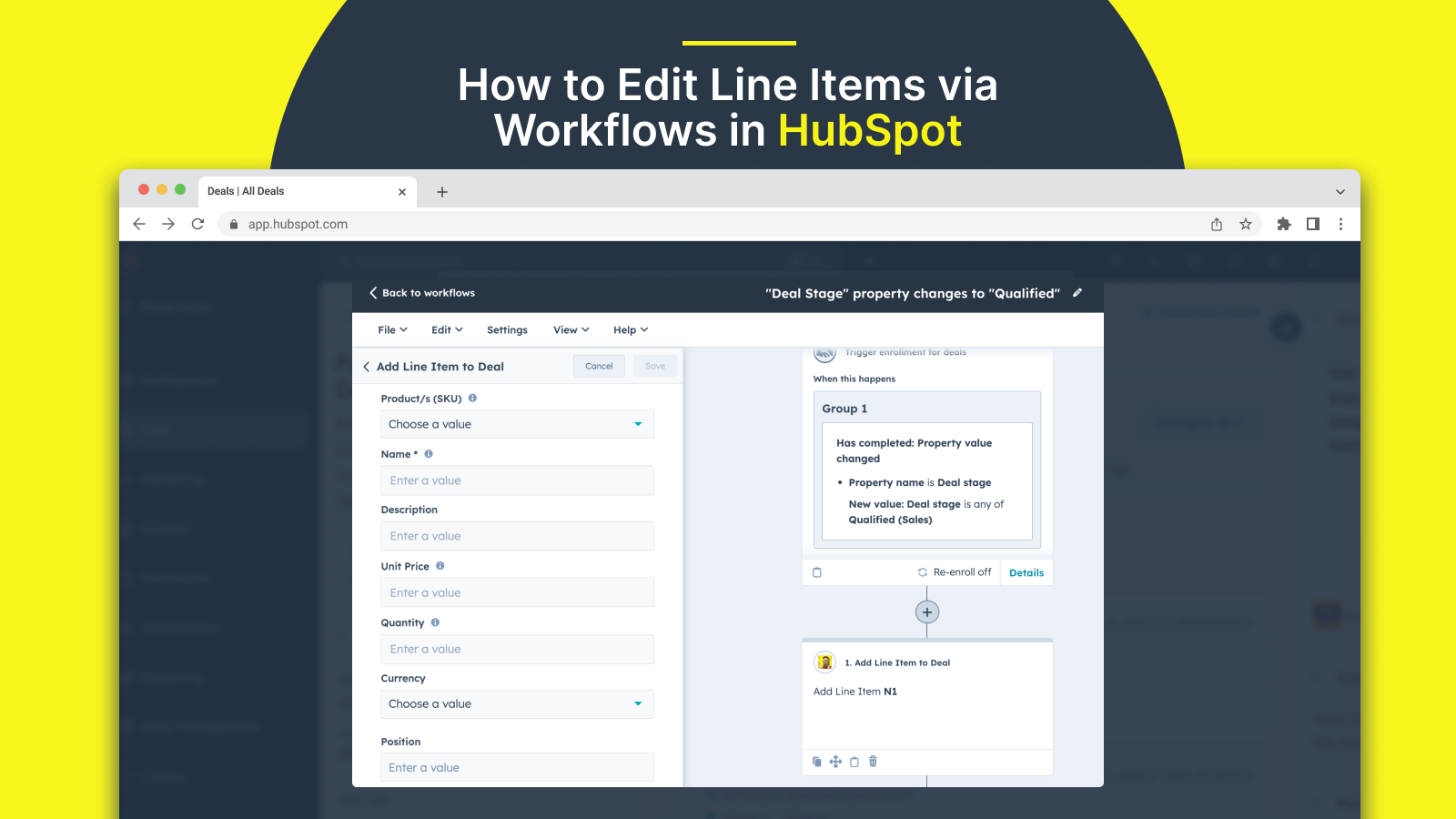In today's hyper-competitive business landscape, the adage "knowledge is power" has evolved into a stark reality: actionable insights extracted from data fuel success. Data-driven decision-making stands at the forefront of modern business strategies, offering a roadmap to navigate complexities, anticipate market shifts, and drive growth.
Businesses that wield data to drive their strategies gain a competitive edge by:
Enabling Precision: Understanding customer behavior and preferences with granular precision allows businesses to tailor their approaches, fostering deeper connections and higher conversion rates.
Predicting Trends: Analyzing historical and real-time data uncovers patterns, enabling proactive measures to anticipate market trends and adapt strategies ahead of the curve.
Optimizing ROI: Every marketing dollar spent matters. Data-driven insights enable optimization, ensuring resources are allocated strategically for maximum impact.
HubSpot: Empowering Analytics for Marketing and Sales
 In this landscape, HubSpot emerges as more than a platform; it's a catalyst for transformative growth. Its robust suite of reporting and analytics tools offers a panoramic view of marketing and sales efforts, enabling businesses to:
In this landscape, HubSpot emerges as more than a platform; it's a catalyst for transformative growth. Its robust suite of reporting and analytics tools offers a panoramic view of marketing and sales efforts, enabling businesses to:
- Unify Insights: Centralizing data from various touchpoints, HubSpot provides a consolidated view, breaking down silos and fostering cross-departmental collaboration for a holistic understanding.
- Drive Informed Actions: From traffic analytics to sales performance metrics, HubSpot equips users with actionable insights, empowering informed decision-making at every stage of the customer journey.
- Enhance Customer Experiences: Armed with a deeper understanding of customer preferences and behaviors, businesses using HubSpot can personalize interactions, elevating customer experiences to drive loyalty and advocacy.
HubSpot Reporting
Navigating HubSpot's Reporting Dashboard
The robust reporting dashboard within HubSpot is a centralized hub that empowers marketers and sales professionals alike to glean invaluable insights, guiding their strategies and decisions. Understanding its intricacies and key components is pivotal in harnessing its full potential.
Overview of the Reporting Interface
Upon entering the reporting dashboard, users encounter a dynamic interface designed to present critical metrics and data points in an easily digestible format. Its key components include:
-
Dashboard Overview: A snapshot summarizing essential metrics across marketing and sales, providing an initial glimpse into the overall performance of various campaigns and initiatives.
-
Report Library: An expansive collection of diverse report types, categorizing analytics pertinent to different facets of business operations. These encompass traffic analytics, sales performance, email marketing insights, customer service metrics, and more.
-
Customization Features: A suite of tools enabling users to refine reports according to their specific requirements. This includes filters, date range selectors, and customizable parameters crucial for tailoring reports to address distinct objectives and KPIs.
Exploring HubSpot's Varied Report Types
HubSpot offers a comprehensive array of report types, each catering to different facets of business operations and providing nuanced insights crucial for informed decision-making:
-
Traffic Analytics: This report delves into the intricacies of website traffic, dissecting visitor behavior, referral sources, and the performance of individual pages. It uncovers trends in user interaction and helps in assessing the effectiveness of content and marketing initiatives.
-
Sales Performance Metrics: Tracking sales metrics such as conversion rates, pipeline progression, revenue generation, and the overall health of sales activities. It offers a comprehensive view of the sales funnel, enabling teams to identify bottlenecks and opportunities for improvement.
-
Email Marketing Insights: Evaluating the performance of email campaigns by measuring metrics like open rates, click-through rates, engagement levels, and conversion attributed to email interactions. These insights aid in optimizing email content and strategies for better engagement.
Customizing Reports for Tailored Insights
One of HubSpot's most powerful features is its capacity for customization, allowing users to tailor reports to their specific goals and objectives:
-
Utilizing Filters: These tools enable users to narrow down data by applying filters based on criteria like traffic sources, campaign types, or specific customer segments. Filtering helps in isolating relevant data for more focused analysis.
-
Date Ranges: Selecting specific time frames – whether daily, weekly, monthly, or custom ranges – provides insights into trends, seasonal fluctuations, and campaign performance over distinct periods, offering a contextual understanding of data.
-
Custom Parameters: This functionality allows for the creation of bespoke reports by selecting specific data fields, metrics, or attributes crucial for the analysis. Custom parameters enhance the depth and relevance of reports, aligning them precisely with desired outcomes.
Key Metrics for Marketing Success
 Understanding Key Marketing Indicators
Understanding Key Marketing Indicators
Traffic Sources: Traffic sources denote the origins of visitors to your website or landing pages. These sources can include organic search, paid advertising, social media referrals, direct visits, or email campaigns. Understanding traffic sources is crucial as it unveils which channels are driving the most visitors, allowing marketers to allocate resources effectively and optimize strategies for higher traffic acquisition.
Conversion Rate: Conversion rate measures the percentage of website visitors who take a desired action, such as making a purchase, signing up for a newsletter, or filling out a form. It's a pivotal metric that reflects the effectiveness of your marketing efforts in persuading visitors to become leads or customers. A higher conversion rate signifies more efficient marketing and a better user experience.
Lead Generation: Lead generation encompasses the process of capturing and nurturing potential customers or leads. It involves tactics like offering valuable content (e.g., eBooks, webinars) in exchange for contact information. Lead generation metrics track the number and quality of leads generated, helping businesses gauge the effectiveness of their lead generation strategies.
Importance in the Marketing Funnel
In the context of the marketing funnel, these indicators play distinct roles:
-
Top of the Funnel (ToFu): Traffic sources are crucial at this stage, introducing prospects to your brand. Diverse sources and higher traffic volumes indicate successful brand awareness efforts.
-
Middle of the Funnel (MoFu): Conversion rates become vital here, signifying the transition of visitors into leads or prospects showing interest in your offerings.
-
Bottom of the Funnel (BoFu): Lead generation metrics take center stage, representing the culmination of successful marketing efforts, where leads are primed for conversion into customers.
Optimization of Campaign Performance
HubSpot's analytics capabilities serve as a compass for optimizing campaign performance:
-
Monitoring and Adjustment: HubSpot's analytics allow real-time monitoring of these indicators, enabling marketers to identify underperforming areas promptly. This insight facilitates strategic adjustments to campaigns for better performance.
-
A/B Testing: HubSpot facilitates A/B testing to compare different versions of campaigns, landing pages, or emails. This data-driven approach helps identify which variations drive better results and informs future strategies.
Utilizing HubSpot for Sales Analytics
HubSpot's prowess extends beyond marketing; it's a game-changer for sales teams, offering a suite of sales-specific reports and analytics. These tools enable sales professionals to navigate pipelines, identify opportunities, and optimize strategies for enhanced efficiency.
Sales-Specific Reports and Analytics in HubSpot
-
Pipeline Performance: HubSpot's pipeline reports provide insights into the sales pipeline's health. These reports track deals at various stages, highlighting potential bottlenecks and areas needing attention.
-
Deal Forecasting: Predictive analytics within HubSpot offer valuable forecasts based on historical data, aiding sales teams in predicting future revenue and adjusting strategies accordingly.
-
Sales Activity Metrics: Tracking activities such as calls, emails, meetings, and follow-ups helps assess sales team performance and the effectiveness of outreach efforts.
Leveraging Data to Identify Opportunities and Manage Pipelines
Sales teams harness HubSpot analytics to:
-
Identify Opportunities: By analyzing lead behavior, engagement metrics, and historical data, sales teams can identify high-potential leads, allowing them to prioritize and personalize their interactions.
-
Manage Pipelines Effectively: With insights from pipeline reports, teams can identify stalled deals or potential areas for improvement. This enables proactive measures to keep deals moving forward and optimize the sales process.
Best Practices for Improving Sales Strategies with Analytics
-
Data-Driven Decision-Making: Encourage a culture of using data to inform decisions, ensuring strategies align with customer behaviors and market trends.
-
Continuous Monitoring and Adaptation: Regularly monitor sales analytics to identify patterns or shifts, and adapt strategies accordingly to stay agile and responsive.
-
Personalization and Targeting: Utilize data insights to personalize sales approaches and target specific customer pain points, increasing the likelihood of successful deals.
Examples Demonstrating Data-Driven Sales Decisions
For instance, a sales team utilizing HubSpot analytics identified that leads coming from a particular industry segment had significantly higher conversion rates. Leveraging this insight, they tailored their outreach efforts and developed industry-specific content, resulting in a substantial increase in closed deals within that segment.
Another example involves a sales team using HubSpot's pipeline reports to identify a recurring bottleneck at a specific stage in the sales process. By analyzing the data further, they discovered that a certain type of follow-up email significantly accelerated deal progression, leading to a revamped follow-up strategy that increased overall conversion rates.
[Related Article: HubSpot SEO: Optimizing Your Website for Search Engines]
Advanced Analytics and Predictive Modeling
 Exploring Advanced Reporting Features in HubSpot
Exploring Advanced Reporting Features in HubSpot
HubSpot's advanced analytics tools go beyond traditional reporting, offering predictive capabilities and sophisticated analytics that revolutionize marketing and sales strategies.
-
Predictive Lead Scoring: HubSpot's predictive lead scoring utilizes machine learning algorithms to assess lead quality based on various factors such as behavior, demographics, and engagement history. This tool helps prioritize leads, focusing sales efforts on those more likely to convert, thereby increasing efficiency and closing rates.
-
Attribution Reporting: Attribution reporting in HubSpot provides insights into the effectiveness of marketing channels throughout the customer journey. It attributes conversions to specific touchpoints, enabling marketers to allocate resources wisely and optimize channels driving the most impact.
Practical Applications and Benefits of Predictive Modeling in Marketing and Sales
-
Enhanced Lead Prioritization: Predictive lead scoring empowers sales teams to concentrate efforts on leads with the highest propensity to convert. This focused approach streamlines workflows and maximizes the chances of successful deals.
-
Optimized Marketing Strategies: By understanding which channels or campaigns contribute most to conversions through attribution reporting, marketers can reallocate budgets, refine messaging, and fine-tune strategies for maximum ROI.
-
Improved Customer Insights: Predictive modeling provides deeper insights into customer behavior, allowing businesses to anticipate needs, personalize interactions, and deliver tailored experiences that foster long-term relationships.
-
Increased Revenue and Efficiency: Leveraging predictive analytics results in higher conversion rates, shortened sales cycles, and improved sales team productivity. This, in turn, drives revenue growth while optimizing resource utilization.
Harnessing HubSpot's Advanced Analytics for Growth
Imagine a scenario where a company, utilizing HubSpot's predictive lead scoring, identifies a specific segment of leads exhibiting behavior indicating imminent purchasing intent. By focusing their efforts on these high-scoring leads, the sales team significantly increases conversion rates, closing deals faster and with greater success.
Additionally, through attribution reporting, a marketing team discovers that while a certain social media platform drives initial engagement, it's a series of personalized email campaigns that ultimately lead to conversions. Armed with this insight, they reallocate resources from social media advertising to further enhance their email marketing efforts, resulting in a notable spike in conversions and revenue.
Future Trends and Conclusion
 Common Pitfalls in Interpreting Data and Ensuring Accurate Analysis
Common Pitfalls in Interpreting Data and Ensuring Accurate Analysis
While data-driven decision-making is invaluable, several pitfalls can hinder accurate interpretation:
- Biased Interpretation: Misinterpreting data due to preconceived notions or biases can lead to flawed conclusions.
- Incomplete Data: Relying on incomplete or inaccurate data sources can skew analyses and subsequent decisions.
- Overlooking Context: Failing to consider broader market trends or external factors may result in misguided strategies.
Establishing a Data-Driven Culture
Creating a data-driven culture is pivotal for sustainable success:
- Training and Education: Invest in continuous training to enhance team proficiency in data analysis and interpretation.
- Embracing Experimentation: Encourage a culture that embraces testing hypotheses, fostering innovation and learning from data-backed experiments.
- Leadership Support: Leadership buy-in is critical in promoting the importance of data-driven decision-making throughout the organization.
Insights into Emerging Trends in Reporting and Analytics
Emerging trends and technologies set to shape the future of reporting and analytics include:
- AI and Machine Learning: Further integration of AI and machine learning in analytics tools for more sophisticated predictive capabilities.
- Real-time Analytics: Greater emphasis on real-time data analysis for quicker decision-making and adaptability.
- Privacy and Compliance: Stricter adherence to data privacy regulations, influencing how data is collected, stored, and utilized.
Recommendations for Deepening Proficiency in HubSpot Reporting
For those seeking to deepen their understanding of HubSpot reporting and analytics:
- HubSpot Academy: Explore HubSpot's official training resources, offering courses, certifications, and guided learning paths on reporting and analytics.
- Community Forums: Engage with the HubSpot community forums, where users share insights, best practices, and troubleshooting tips.
- Expert Blogs and Webinars: Follow industry experts and thought leaders in marketing and sales analytics who regularly share valuable insights through blogs, webinars, and podcasts.
As we look to the future, emerging trends and technologies in reporting and analytics will shape how businesses derive insights and drive strategies. Embracing these trends will be pivotal in staying ahead in an increasingly data-centric landscape.






.png)